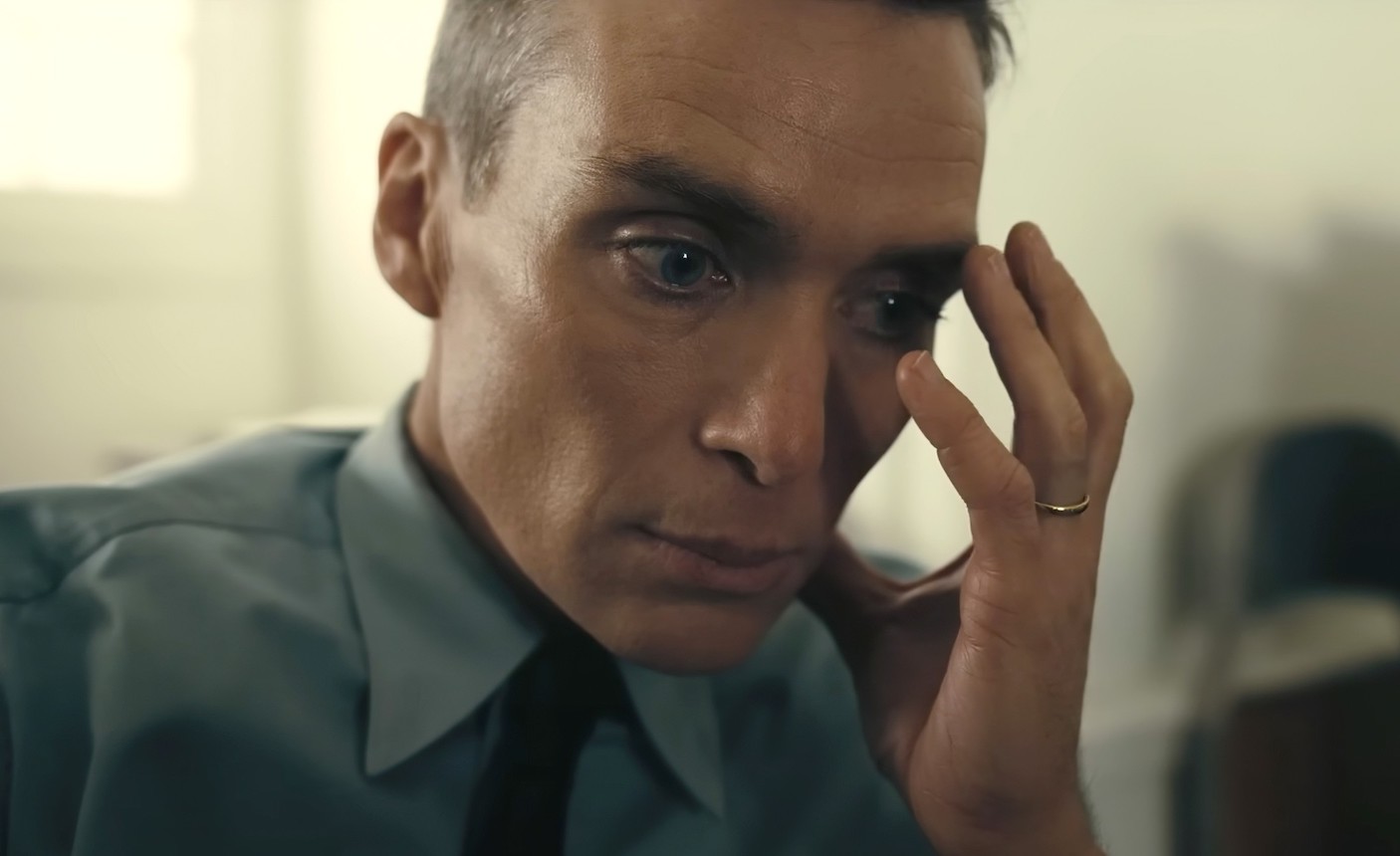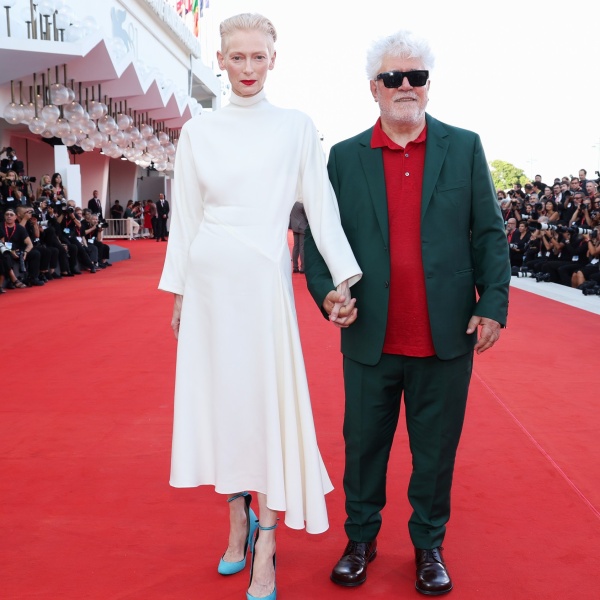Seeing is not the same thing as knowing. And certainly not the same thing as understanding.
Never before in the history of our species have humans been asked to process so much visual information all the time, often at the same time. Yet whether the endlessly multiplying screens we direct our eyeballs to are actually causing us to be smarter or wiser or more empathetic is still unclear. That’s not news to anyone familiar with terms like “cut through the noise,” or aware of the impulse toward “curation” to find what’s actually good or what anything actually means. Movies and TV, though, have always suggested “seeing” is the highest value: the cameo of a beloved star, the Easter egg, the desire to visualize anything and everything in pixel-perfect VFX, “you’ll believe a man can fly.”
Some of the most compelling visual media of 2023 went in a different direction. They made it clear that what we don’t see onscreen can be even more important than what we do.
After 32 episodes of following Logan Roy “fuck you” his way toward maintaining his reign as king of the media mountaintop, his demise in “Succession” occurred offscreen. No dramatic collapse while chasing his grandson around a garden with an insect sprayer in hand and orange peel in his mouth. The children of the Waystar Royco CEO experienced his exit from this world in a way the loved ones of all too many did during the height of COVID: remotely. Uncertain of what he was thinking or feeling in his last moments. Was he in pain? Was he content? Did he hear their final messages? We’ll never know, even if we sort of do know who he named his successor — as if the answer to that question was all that show was really about.
The same was true in the film sphere. “Oppenheimer” backlash hit a mild critical mass in certain more reactive corners of the Twitterverse because of what it left out. The objection was to director Christopher Nolan’s choice not to show the atomic bombings of Hiroshima and Nagasaki and the brutal, life-altering effects on even those who survived (nor the effects on the Native American and Latino populations affected by the Trinity Test in New Mexico).
But, as Justin Chang wrote in the Los Angeles Times, “omission is not erasure.” It’s hard to imagine any CGI rendering of the bombings, any application of gruesome makeup on a large group of extras, even coming close to the full devastation, the full horror of those events — wouldn’t the attempt be tacky by default? Wouldn’t it exactly have been the kind of death spectacle that also draws contempt? (The kind that Devery Jacobs accused “Killers of the Flower Moon” of being.) Perhaps this is saying that the critics of “Schindler’s List” 30 years ago had a point when they said that something as vast as the Holocaust — or the nuclear warfare at the end of World War II — could never be represented on film except as a cheap facsimile.
Oppenheimer created the thing he feared the most in a vain effort to control it, but never “saw” what it would truly do to its victims. The deepest secret of Nolan’s film is that Gary Oldman’s Harry Truman, abrasively dismissing Oppenheimer as a “crybaby,” is actually right: How could the scientist have imagined everything related to the atomic bomb except how it would make people suffer? Eventually, he does, but then it’s too late.
Nolan is savvy enough to show how Oppenheimer’s psychological need to become a martyr, his need to be publicly maligned and kicked out of government, was some way to atone for — or at least disassociate with — his monstrous creation. Much like how Benoit Magimel’s De Roller becomes so deeply committed to rooting out the French navy’s plot to resume nuclear testing near Tahiti in “Pacifiction” because it’s also a way of proving he’s more than just a tool of the state.
It wasn’t just the bombings themselves that cast a shadow over the post-1945 world order. It was the idea of the bombings. The way they occupied space inside the mind of anyone with sense ever since. A book like John Hersey’s “Hiroshima,” with its endless, Dante-like descriptions of human suffering could live in one’s brain forever after you turn the last page. Because you yourself have conjured the images when reading it. Much the way Cillian Murphy’s J. Robert Oppenheimer ultimately does when he imagines the singed, peeling flesh on his colleagues’ faces when receiving their applause.
That small-scale vision he has shows the limits of his empathy — he can only imagine the suffering of people he directly knows — but it’s hard to imagine how Nolan could have done it any differently. Any sprawling tableau of city-wide destruction might have been merely “disaster porn” or, like the crane shot of wounded soldiers littering the ground in Atlanta in “Gone with the Wind,” merely calling attention to itself. Sometimes depiction of the central event in question is almost impossible — as the final shot of “May December” suggests — or at least a really bad idea.
People’s monumental ability to compartmentalize, to not “see” the things they’re looking at right in front of them, is the entire basis of Jonathan Glazer’s “The Zone of Interest.” How could the Holocaust have happened? This film actually attempts an answer: by showing how easily people can deny the humanity of anyone else.
Auschwitz commandant Rudolf Höss (Christian Friedel) and his wife, Hedwig (Sandra Hüller), have created an idyllic little home and garden for themselves and their children… right in the shadow of the walls and guard towers of the notorious death camp. Glazer lets his story unfold on two different tracks: there’s the images — garden parties, bathing trips to the river, angry confrontations over the prospect of Rudolf being assigned elsewhere and Hedwig’s desire to remain at Auschwitz, because she loves it so much — and supervising sound editor Johnnie Burn and Tarn Willers’ extraordinary sonic landscapes. You don’t see beyond the walls of Auschwitz in this film, as Hedwig and her children wouldn’t have, but walls can’t keep out screams. Or gunshots. Or the low rumble of the crematoria.
Hedwig knows more about what’s happening beyond the walls than she may let on — even to herself. To her, the Holocaust is a rumor whispered about. But to Rudolf, it’s his day job, it’s blueprints and spreadsheets, and quotas that we know really represent human lives. He can go from hearing a pitch for an even more efficient crematorium to raping a prisoner to balancing his children on his knee.
Holocaust denial is so monstrous (and dangerous) because the Holocaust itself was the product of denial, Glazer shows us. Of people in denial about the monstrousness of what’s happening around them. It makes us wonder what horrors that exist in the world today we may have anesthetized ourselves to as well. “The Zone of Interest” is not a film about what happened, it’s a film about why this happened. If it had focused on grisly images of mass suffering, it’s possible the shock of those images might have detracted from that message: Much as it did when the occupying Allied forces showed newsreel images from the death camps to German civilians in the immediate aftermath of the war and some in the audience were known to say they thought the images so outrageous that the Jews in Hollywood must have staged them for the cameras. Never mind that they were real.
But the thing about “real” images is that they can be so overwhelming — when you watch the footage shot for the British government’s “German Concentration Camps Factual Survey,” a procession of death so mind-boggling it went unreleased for 70 years because it’s almost impossible to process — that they’re unthinkable. They’re unimaginable. And the problem is that when some things become so unimaginable, they also become, for some, unbelievable.
Some version of that dialectic, along with just the sharp uptick in antisemitism worldwide, may be behind why certain studies show a marked increase in Holocaust denial among young people. Glazer’s film feels like the antidote, the thing to make what’s incomprehensible comprehensible. It’s because it’s also about people who don’t see what’s around them, they only see what they think they see.

“World is decay. Life is perception,” history teacher Paul Giamatti says in “The Holdovers,” quoting Democritus. It’s essential to remember that what we perceive is not the same thing as what is: Felipe Galvez’s “The Settlers” ends with a moment about that very thing as we see the stress and strain and coercion that goes into the taking of an official Chilean government photograph of an Indigenous family. Everything leading up to the image, everything outside the frame, is what matters more than “what we see.” And if you think about it, Stereotypical Barbie certainly comes to that realization when she leaves the Plato’s Cave-like world of Barbieland in Greta Gerwig’s year-defining blockbuster. Her entire journey is an arc from what appears to be… toward what’s real.
Our cultural discourse in the past few years has attuned us to think that representation is the highest virtue unto itself. And what is representation if not simply the act of seeing? But the best films of 2023 showed us that what’s under the surface, what’s lurking offscreen, the things you don’t see, can be their own deep reservoirs of meaning.




